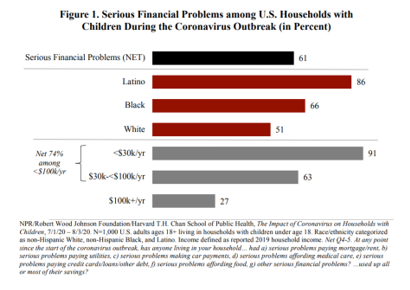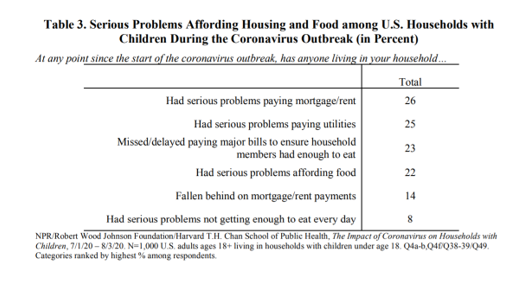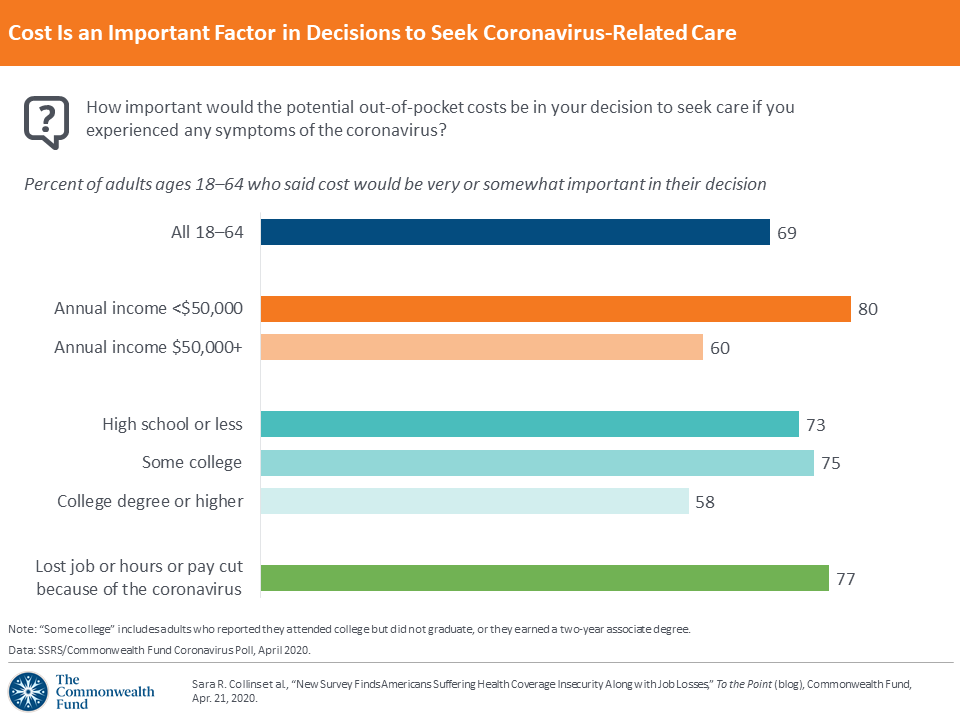The U.S. health care community is collectively embracing the concept of social determinants of health that have become so obvious in understanding the disparities of health outcomes wrought by the coronavirus pandemic.
 Research from the Harvard Chan School of Public Health conducted with the Robert Wood Johnson Foundation and NPR illustrates the fact that people who are at risk for one social determinant of health tend to be challenged by a bucket of them.
Research from the Harvard Chan School of Public Health conducted with the Robert Wood Johnson Foundation and NPR illustrates the fact that people who are at risk for one social determinant of health tend to be challenged by a bucket of them.
The survey research reported in The Impact of Coronavirus on Households With Children, published on 30th September, found that 61% of U.S. households with children had serious financial problems during the pandemic as of July-August 2020.
People of color, Latino or Black, were more likely to be facing financial problems compared with white people, the first chart illustrates. The percentage differences between the three groups is wide ranging: 86% among Latino, 66% for Blacks, and 51% for Whites.
It is obvious that people earning lower incomes would be dealing with serious financial problems compared with higher-income earners: 91% of folks earning less than $30,000 a year have been facing financial challenges, versus 63% earning $30-100K and 27% with over $100,000 income a year. s
s
Income underpins socioeconomic status: people earning more money in America tend to be more highly educated, have higher wage jobs that are bundled with health insurance through employers, have easier access to healthy food options, and live in cleaner, safer neighborhoods and housing environments.
The second graphic, labeled Table 3, details several social determinants of health by type, including ability to pay mortgage or rent (housing as an SDoH), ability to pay for utilities (heat, air conditioning, water bills), ability to afford to buy food (food security), and falling behind on housing payments (financial health overall).
One in four people with children in the pandemic faced problems paying for housing (rent, mortgage), utilities, or food, shown in the table.
Furthermore, among the 61% of people with children in the pandemic who faced serious financial problems, 44% used up all or most of their savings by August 2020 and 31% had problems paying credit cards, loans, or other debt.
In the pandemic, it became clear that having internet connectivity was a social determinant of health and daily living, without which people couldn’t tele-work from home, learn for school at home, or access virtual health care platforms from home to avoid being exposed to COVID-19 at a hospital or doctor’s office. One in three U.S. households with children had serious problems with their internet connection or did not have a high-speed connection at home.
This survey polled 3,454 U.S. adults 18 years of age and older, including 1,000 people living with children under 18 years old, between early July and early August 2020. The study polled people through online, landline, and telephone platforms to ensure sound distribution of citizens across the income and connectivity spectrum.
 Health Populi’s Hot Points: Only in America have patients had to act as health consumers rationing care due to cost, even with COVID-19 symptoms.
Health Populi’s Hot Points: Only in America have patients had to act as health consumers rationing care due to cost, even with COVID-19 symptoms.
The Commonwealth Fund found during the pandemic that the cost of care dissuaded some people from seeking treatment, even facing symptoms of the coronavirus.
Access to health care services is a social determinant of health. As the Commonwealth Fund data shows, even people earning over $50,000 a year consider their out-of-pocket health care costs as a factor in seeking care — facing COVID-19 symptoms.
As health systems, health plans and life science companies expand their efforts to address social determinants of health, with good intentions, organizations should be soberly mindful that attacking one SDoH is one in what is no doubt part of a larger portfolio of challenges facing mainstream Americans in and beyond the pandemic itself.
These are baked into the roots of American life and daily living. Addressing the challenges of social determinants will take that proverbial village, and public policies that embed “health” and wellbeing across many aspects of the larger body politic.




 Thank you, Trey Rawles of @Optum, for including me on
Thank you, Trey Rawles of @Optum, for including me on  I was invited to be a Judge for the upcoming
I was invited to be a Judge for the upcoming  For the past 15 years,
For the past 15 years,